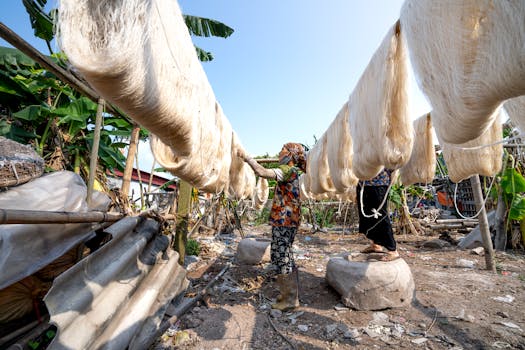Empowering Communities: The Role of Women in Africa’s Fiber Production

Empowering Communities: The Role of Women in Africa’s Fiber Production
Empowering Communities: The Role of Women in Africa’s Fiber Production is a crucial aspect of the continent’s economic and social development. Women in Africa have long been involved in fiber production, from cotton and textile manufacturing to natural fiber harvesting and processing. The significance of women’s participation in Africa’s fiber production industry cannot be overstated, as it provides a vital source of income, employment, and social mobility for women and their families.
Women in Africa are the backbone of the fiber production industry, with many working as small-scale farmers, artisans, and entrepreneurs. They are responsible for planting, harvesting, and processing natural fibers such as cotton, sisal, and jute, which are then used to create a range of products, including textiles, clothing, and crafts. Women’s participation in fiber production not only contributes to the economic development of their communities but also helps to preserve traditional skills and cultural heritage.
The Benefits of Women’s Participation in Fiber Production
The benefits of women’s participation in fiber production are numerous. For one, it provides women with a source of income and economic independence, allowing them to support themselves and their families. Women’s participation in fiber production also helps to promote social mobility, as it enables them to access education, healthcare, and other social services. Furthermore, women’s involvement in fiber production helps to preserve traditional skills and cultural heritage, which are essential to the identity and well-being of African communities.
In addition to the economic and social benefits, women’s participation in fiber production also has environmental benefits. Natural fibers such as cotton, sisal, and jute are biodegradable and require less water and pesticides than synthetic fibers, making them a more sustainable option. Women’s involvement in fiber production also promotes sustainable agriculture practices, as they are more likely to use traditional farming methods that prioritize soil conservation and biodiversity.
Challenges Facing Women in Fiber Production
Despite the many benefits of women’s participation in fiber production, there are several challenges that women face in the industry. One of the major challenges is lack of access to finance, technology, and markets. Women often lack the resources and infrastructure needed to produce and sell their products, making it difficult for them to compete with larger-scale producers. Additionally, women in fiber production often face social and cultural barriers, including limited access to education and training, and societal expectations that prioritize domestic work over economic activity.
To address these challenges, it is essential to provide women in fiber production with access to training, finance, and markets. Governments, NGOs, and private sector organizations can provide support through initiatives such as vocational training, microfinance programs, and market access schemes. Additionally, efforts to promote women’s empowerment and social mobility, such as education and healthcare programs, can help to address the social and cultural barriers that women face in the industry.
Conclusion
In conclusion, the role of women in Africa’s fiber production is vital to the economic and social development of their communities. Women’s participation in fiber production provides a source of income, employment, and social mobility, while also promoting sustainable agriculture practices and preserving traditional skills and cultural heritage. To support women in fiber production, it is essential to address the challenges they face, including lack of access to finance, technology, and markets, and social and cultural barriers. By providing women with the resources and support they need, we can empower them to reach their full potential and contribute to the growth and development of Africa’s fiber production industry.


